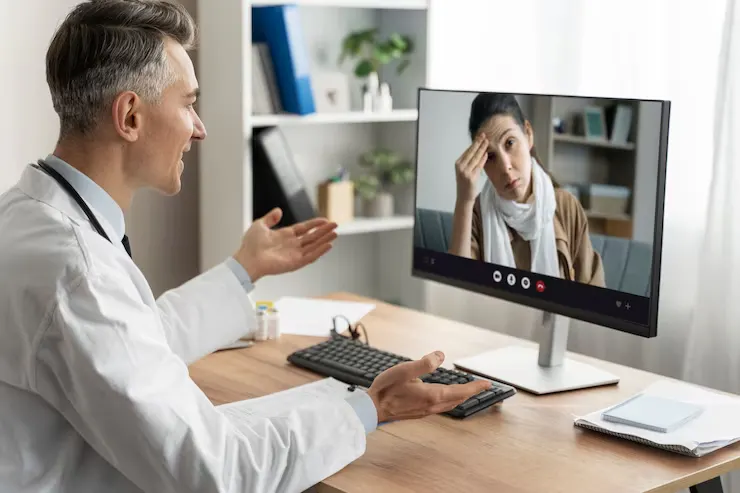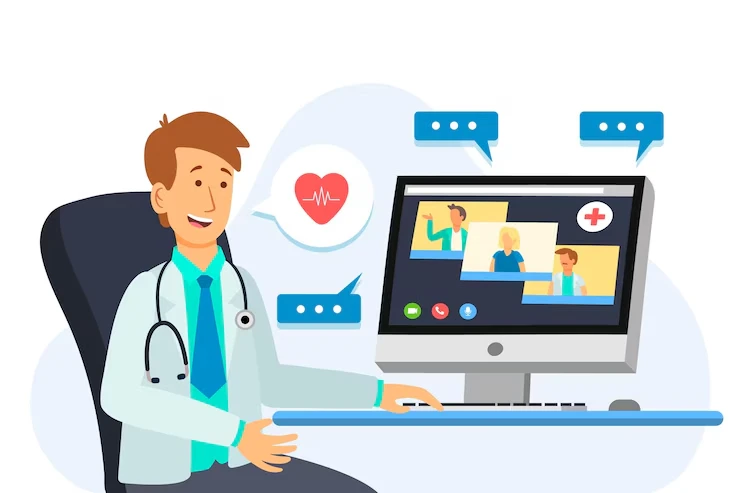The world of healthcare is changing, and telemedicine is a game changer. With online appointments, patients get more convenience and accessibility. No more traffic or long waiting—now you can connect with your doctor from home.
But to get a better result from these digital visits, you need some smart preparation. Whether you are a new or used person with online care, knowing how to optimise your telemedicine experience helps improve communication and treatment.
Get ready to learn how to succeed with virtual visits—from tech setup to listing your symptoms. Let’s read about how to make the most of every appointment!
The Rise of Telemedicine: How It Became So Popular

Telemedicine has actually been around for a long time. But it became very popular during the COVID-19 pandemic. During that time, many people could not leave their homes. But doctors still help their patients, so they connect to their patients using phones and computers to talk to them.
Now, even though the pandemic is over, many people still use telemedicine. Why? Because it saves time, money, and effort. It’s not just something we used during COVID—it’s now a big part of how we get healthcare.
How to Prepare for a Telemedicine Appointment
- Choose the Right App: Different doctors use different apps to talk with you. Make sure the app is safe so your personal information will be protected. Some popular apps are e-Sanjeevani, Teladoc, and Practo. These help you talk to the doctor easily.
- Check Your Network: Before your doctor appointment, make sure your internet, camera, and microphone are working. Test everything so there won’t be any problems. If you can, use a laptop or tablet for the best picture and sound.
- Find a Quiet Place: When you talk to the doctor, try to be in a quiet place where you can focus. Make sure the room is well-lit, so the doctor can see you clearly. If it’s noisy or you can not hear well, try using headphones.
- Get Your Health Info: Ready Before the visit, write down your medicines, any allergies, and any health problems you have had before. If you are feeling sick with something like a headache or stomach ache, note when it started and if anything makes it better or worse. This helps the doctor know how to help you better.
- Write Down Your Questions: Sometimes it is easy to forget things you want to ask to the doctor. So, write down your questions before your visit. This way, you will not forget anything and can talk easily.

How to Have a Smooth Appointment
- Ask About What’s Next: Before your visit ends, ask the doctor what you should do next. Do you need to see them again? Do you need medicine or changes like eating healthy or exercising? This helps you know what to do after the visit.
- Be On Time: Try to log in a few minutes before your appointment starts. This way, you’ll have time to fix any problems with your camera or internet, and you won’t be late.
- Talk Clearly: When you talk to your doctor, make sure to speak slowly and clearly. If you don’t understand something, ask the doctor to explain it again. Doctors want to help, and they will make sure you understand.
- Show the Doctor Your Symptoms: If you have something that you can see, like a rash or swelling, take a clear photo of it before your visit. Show the photo to the doctor so they can see exactly what’s going on and help you better.
After Your Telehealth Visit: Keep Things on Track
1. Follow Up on Medicine and Tests If the doctor gives you medicine or asks you to take a test, make sure you do it. Some telehealth apps can send your medicine straight to the pharmacy, so you can pick it up easily.
2. Write Down What You Talked About It’s a good idea to write down the important things the doctor told you. This will help you remember what the doctor said and keep track of your health. You can also look at your notes before your next visit.
3. Make Your Next Appointment If you need another telehealth visit, or if you need to see a doctor in person, make sure to schedule it right away. Regular check-ups, whether online or in person, are important to stay healthy and get the care you need.
New and Exciting Changes in Telehealth

Telehealth is not just about talking to a doctor online anymore. There are new things that make it even better!
Telehealth for Feeling Good Inside
Telehealth also helps with mental health. Apps like BetterHelp and Talkspace let you talk to a therapist online if you’re feeling sad, worried, or just need to talk.
AI Helpers
Some apps use AI, which is smart computer help. These helpers can help you make appointments, answer simple health questions, and remind you to take your medicine.
Health Monitoring with Smart Devices
You can wear smartwatches that check your heart rate, blood pressure, and how much you move. The doctor can see all this information even when you’re at home and can help if anything needs fixing.
Challenges and the Future of Telehealth: What’s Coming
Telehealth future is great, but there are a few things that can make it tricky sometimes:
- Internet Problems: Some people, especially in areas far from big cities, may not have a good internet connection. This can make it hard to talk to the doctor through video calls.
- Keeping Information Safe: It’s important that the app or website you use is safe so your private health information stays protected.
- When the Doctor Needs to See You in Person: Some health problems need the doctor to see or touch you. Telehealth can’t always do that, but the doctor will tell you if you need to visit them in person.
The Future of Telehealth Appointment is Bright
The future of telehealth appointment is looking even better! With new technology like 5G, AI, and faster internet, telehealth is getting easier and better to use. Doctors will be able to help people faster and better from far away. More people will also be able to use telehealth, no matter where they live.
Conclusion
To have a good telehealth visit, you just need to be ready, talk clearly, and follow what the doctor says. If you do these things, you’ll feel more confident and make the most of your doctor’s visit. As technology gets better, telehealth appointment will be even more important for getting care. It’s faster and easier and helps doctors talk to patients all over the world. So next time you need to see a doctor, think about using telehealth. It’s a great way to get help without leaving your home.

